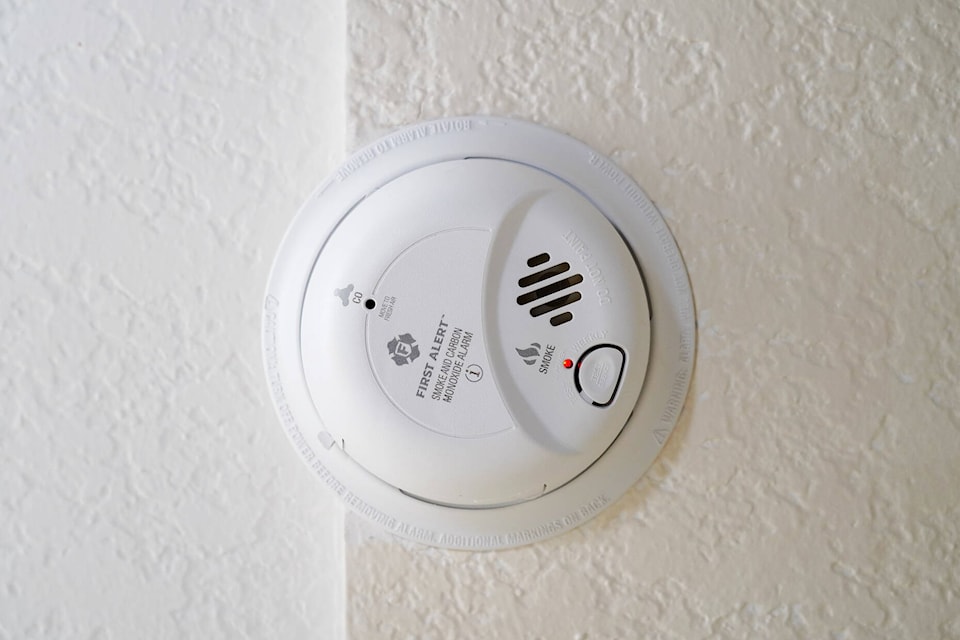With more cases of carbon monoxide poisoning happening in the winter months, Fraser Health and the Surrey fire department are urging residents to ensure they have a carbon monoxide detector in their home.
Jason Cairney, deputy chief of prevention and IT Services of Surrey Fire Department, says they see an average of 235 carbon monoxide calls yearly. That number goes up each year as the number of houses built in Surrey increase.
Carbon monoxide is produces when any fuel, including wood, gasoline, coal, natural gas or kerosene is incompletely burned. Fuel-based appliances can leak carbon monoxide, so they should be regularly maintained. Removing your vehicle from the garage immediately after starting it is also important. Even having it on in your garage with an open door can be dangerous, stated Cairney.
Another reason carbon monoxide poisoning might happen more in the winter is that the heat exhaust vents outside a home can become blocked after a snowstorm. Residents are encouraged to ensure their vents are clear after each storm.
Dr. Emily Newhouse is a medical health officer at Fraser Health. She told the Now-Leader that carbon monoxide detectors are a must in homes that are heated by fuel and have fuel-burning appliances, everyone should have them in their home, no matter how it is heated.
For example, if someone is pressure washing outside, carbon monoxide can get into their home if the doors and windows are open.
“Breathing in carbon monoxide is so dangerous because it prevents our body from using oxygen properly,” said Dr. Newhouse. “Our blood binds to carbon monoxide better than it does to oxygen, so it prevents us from getting the oxygen we need.”
Furthermore, Dr. Newhouse said the symptoms of carbon monoxide poisoning can initially be subtle. They include a headache, feeling dizzy or weak, shortness of breath, confusion, nausea or vomiting, sometimes blurred vision and loss of consciousness. Those sleeping or intoxicated are at a higher risk of carbon monoxide poisoning, and fatalities often happen in these situations.
If you think you are having symptoms of carbon monoxide poisoning, leave your house. If you feel better later, Dr. Newhouse still encourages people to seek medical care if they have experienced symptoms. If your alarm sounds, step outside and call 911.
Technical Safety BC, the authority for gas safety within Surrey, states detectors should be installed on every floor of your home and next to each sleeping area.
For more information on carbon monoxide detectors, visit Technical Safety B.C.’s website at technicalsafetybc.ca.
anna.burns@surreynowleader.com
Like us on Facebook Like us on Instagram and Follow Anna on Twitter.
